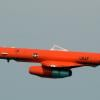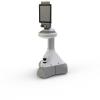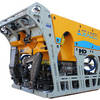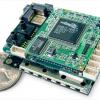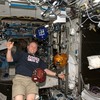Accuray Boeing Colin Angle Consumer Robotics CyberKnife CytoCare DARPA Education Financial Results Health Robotics Healthcare Robotics i.v.Station Industrial Robotics Industrial robotics International Space Station iRobot Liquid Robotics Lockheed Martin Medical Device Medical Robotics Medical robotics medical robotics Military Robotics Military robotics NASA Northrop Grumman Oceanography PackBot Remotely Operated Vehicle Research Robot Robotics ROV Schilling Robotics UAV Unmanned Aerial Vehicle unmanned aerial vehicle Unmanned aerial vehicle Unmanned Underwater Vehicle UUV
Unmanned Drones to Share US Airspace by 2015
February 10, 2012One of the more noteworthy news items this week, was the passage by the US Congress of a bill that will usher in a new era in the nation’s skies. The new bill will hasten the switch of the air traffic control system from the current radar-based system to one that relies on GPS.
Another element of the bill was the fact that Congress has authorized unmanned drones to share the same airspace as piloted commercial passenger airplanes.
The FAA will be required to provide military, commercial and privately-owned drones with expanded access to U.S.
Medical Robotics Firm Approaches European Milestone
February 9, 2012Stereotaxis, Inc., manufacturer of the Vdrive Robotic Navigation System, an advanced cardiology instrument control solution, announced that it expects to surpass 500 clinical procedures in Europe before the current month is out.
Separately, Stereotaxis announced regulatory clearance from Health Canada to commercially market the device in Canada.
Since its introduction to the European market in 2011, the Vdrive system has been installed in nine centers, with units scheduled to be installed in additional centers during the first quarter of 2012. The initial nine centers have performed 473 clinical cases with approximately 80% being completed in the left atrium of the heart.
iRobot Announces Record Results
February 9, 2012Apparently Roomba business is good business. iRobot Corp. has announced its financial results for Q4 and for the full year ended December 31, 2011 and the news is positive. In fact, it was a record year for the Bedford-Mass.-based robotics manufacturer.
According to an official company release:
Revenue for the fourth quarter of 2011 increased 15 percent to $130.8 million, compared with $114.0 million for the same quarter one year ago.
N. Korea Arming 1970's-Era U.S. Drones?
February 6, 2012According to a report published by South Korea’s Yonhap News Agency, North Korea is allegedly developing a new attack capability by refitting U.S. target drones with the capacity to carry high-explosive payloads.
The news agency cited an anonymous South Korean intelligence report.
According to the source, “North Korea recently bought several U.S. MQM-107D Streakers from a Middle Eastern nation that appears to be Syria, and is developing unmanned attack aircraft based on them.”
iRobot Takes Minority Stake in Telemedicine Firm
February 1, 2012Bedford, Massachusetts-based iRobot is expanding its relationship with Santa Barbara, California-based InTouch Health, a remote presence telemedicine solution provider by investing $6 million, which represents iRobot taking a minority position in the company.
Back in July 2011, the two firms announced a joint development and licensing agreement, which was established to explore opportunities for healthcare applications on iRobot platforms, such as the iRobot Ava mobile robotics platform.
InTouch Health provides telemedicine solutions and expertise designed to enable doctors to consult with patients in real-time, regardless of the distance between them. Using an online portal, doctors can access telemedicine devices from wherever they are located to provide care anywhere patients might be: homes, clinics, ambulances, and hospital procedure rooms and wards.
Robots? Cool. Swarming Flying Robots? Very Cool.
February 1, 2012Whoa. If you harbor any fear of swarms of multiple robots flying in formation, avoiding obstacles, then this YouTube video might not be for you.
If on the other hand you think this is really fascinating and a great example of what the future holds, well then the video will be really, really cool.
The General Robotics, Automation, Sensing, and Perception (GRASP) lab at UPenn is conducting research using a series of nano quadrotors developed by KMel Robotics. Until now, the GRASP team had been able to showcase the robots flying "aggressively" meaning they could land on angled surfaces and navigate obstacles at high speed.
Seabed Acquires Schilling ROV
January 31, 2012Schilling Robotics has announced the expansion of their customer base with the addition of Norwegian deep-sea specialist Seabed AS, who took delivery of a new Schilling HD 23 ROV system. The HD 23 is a 150-horsepower, 4,000 meter-rated remotely operated vehicle (ROV) system designed for subsea applications including underwater inspection, repair, maintenance (IRM), drill support, and medium-duty construction.
The ROV was delivered in December 2011.
Tyler Schilling, chief executive officer for Schilling Robotics, expressed his satisfaction with Seabed’s choice to partner with his firm.
Robotic Pitchers and Catchers - A Sure Sign of Spring?
January 30, 2012As baseball fans eagerly await the return of pitchers and catchers to spring training, it seems that researchers at the Institute of Robotics and Mechatronics at DLR (German Aerospace Center) have come up with a robot nicknamed Agile Justin that can throw a ball. Which, some baseball purists (among others) might point out, is about time, since last year the Institute created the ball-catching robot, Rollin’ Justin.
I mean, can it still be called catch if you’re playing alone?
According to information on DLR’s Web site, the technology necessary to mimic the human capacity for catching a thrown ball is not so basic.
Northrop, Navy Complete Autonomous Aerial Refueling Tests
January 27, 2012Northrop Grumman Corporation and the U.S. Navy successfully completed a series of autonomous aerial refueling (AAR) tests designed to demonstrate technology that will extend the operating range and flight duration of future carrier-based unmanned systems.
The tests, carried out using Calspan Corporation’s Variable Stability Learjet as a surrogate for the X-47B unmanned aircraft, and a K707 tanker provided by Omega Air Refueling proved the functionality of the hardware and software that will eventually enable the X-47B aircraft to demonstrate AAR in 2014.
The tests are part of ongoing work in the US Navy’s Unmanned Combat Air System Carrier Demonstration (UCAS-D) program, and are designed to prove out technology which will eventually lead to unmanned aircraft being able to stay aloft for longer periods of time.
According to Carl Johnson, vice president and UCAS-D program manager for Northrop Grumman’s Aerospace Systems sector, “Future unmanned systems will need to use both refueling techniques if they plan to conduct longer range surveillance or strike missions from the carrier.”
Actor, Voice of TV's 'Lost in Space' Robot Dies at 85
January 27, 2012Dick Tufeld, who was the voice of the robot on the 1960’s television series, “Lost in Space” (1965–1968), died this past week at his home in Los Angeles. Tufeld had a history of heart disease, and was said to have been in declining health. He was 85 years old.
Tufeld had a long and successful broadcast career, with announcing stints on TV shows like “Voyage to the Bottom of the Sea” and commercial voiceovers for Gallo Wines as well as a radio career in the 1950’s that included credits on such shows as “Annie Oakley,” “Zorro,” “Spider-Man and His Amazing Friends,” “The Fantastic Four,” and others.
Swiss Robot Maker Set to Launch SCORP
January 26, 2012An item on Gizmag.com sparked my interest today. As it turns out, Lausanne, Switzerland-based Novatiq is set to release a micro-unmanned ground vehicle, or MUGV, called SCORP. Classified as a “throwable” robot, the device is specially designed for front-line personnel engaged in antiterrorism, police, bomb squad and military activities.
Novatiq describes the 2.5 kg (5.5 lb.) SCORP as an “…advanced small, lightweight portable reconnaissance robot… that can be deployed and operated by a single person.”
Two Teams Emerge Victorious in SPHERES Challenge
January 25, 2012The Massachusetts Institute of Technology played host to over 200 high-school students competing in the third annual NASA-sponsored Zero Robotics SPHERES Challenge.
Two teams of students — one US-based and one European team — earned bragging rights as the winners of the SPHERES Challenge, which tasked them with programming a group of miniature satellites that are currently in orbit aboard the International Space Station. Alliance Rocket from the United States and Alliance CyberAvo from Europe were named the winners. Both winning efforts were in turn made up of three individual teams:
- Alliance Rocket comprised Team Rocket, River Hill High School, Clarksville, MD; Storming Robots, Branchburg, NJ; and SPHEREZ of Influence, Rockledge High School/Brevard County, FL.
Chrysler Foundation Offers Grants to Support Youth Robotics
January 19, 2012The Chrysler Foundation has been a supporter of youth robotics programs for the past 16 years, and today the company announced a series of grants totaling over $130,000. The grants, which range from $500 to $6,625, were awarded to teams of students participating in FIRST (For Inspiration and Recognition of Science and Technology) and FLL (FIRST Lego League) competitions.
The Foundation, which is committed to science, technology, engineering and mathematics (STEM) education, will award the grants to 22 teams from Arizona, Indiana, Michigan and Virginia. The funds will be used to offset costs associated with items such as registration fees, parts and materials and team apparel.
Lockheed Martin Acquires Avionics Specialist
January 18, 2012Lockheed Martin has announced the acquisition of privately held Procerus Technologies, an Orem, Utah-based company specializing in avionics for micro unmanned aerial systems (UAS). Procerus was founded in 2004.
According to a press release hailing the acquisition, Procerus provides autopilot, targeting and payload technologies for micro UAS to domestic and international governments, as well as industry and academic institutions.
One example is the company’s Kestrel autopilot system (pictured), which is designed as a small and light, yet fully-featured micro autopilot system for surveillance and reconnaissance applications.
Students to Compete in Robotics Challenge
January 18, 2012A group of high school students will compete in the third annual Zero Robotics SPHERES Challenge on Monday January 23rd. They will be operating under the aegis of some high-flying sponsors, namely NASA, DARPA, and MIT. (That’s the National Aeronautics and Space Administration, the Defense Advanced Research Projects Agency, and the Massachusetts Institute of Technology for the acronym challenged.)
NASA will upload software developed by 27 teams of high school students onto Synchronized Position Hold, Engage, Reorient, Experimental Satellites (SPHERES), which are bowling ball-sized spherical satellites aboard the International Space Station.



